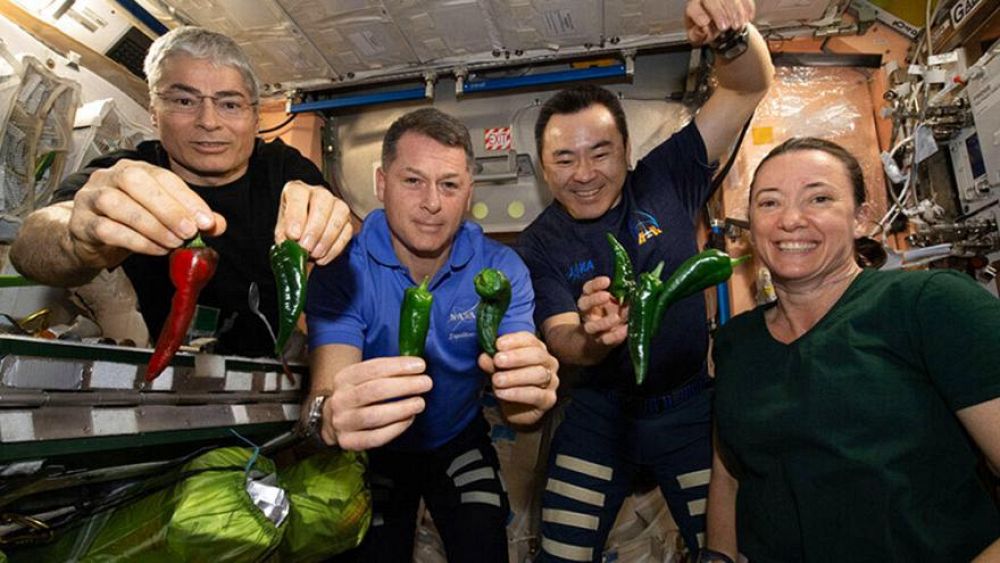It was the longest experiment in the history of the International Space Station (ISS) and, according to NASA, also the spiciest. After 137 days, the astronauts on board were able to harvest chili peppers for the second time in the station’s history.
In late November, crew member Mark Vande Hei collected some of the 26 chili peppers grown from four plants in the Advanced Plant Habitat (APH). This year has been a record harvest. “With this experiment, we took a variety of a New Mexico Hatch hot pepper for open field cultivation., we dwarfed it to fit inside the APH and figured out how to productively harvest the first fruit crop in space, all in the span of a couple of years”.
But the second trial set another record: The harvested fruits provided food for the entire crew, and could also be sent to Earth.
Plants grown from pepper seeds were the target of the “Plant Habitat-04” experiment, PH-04 for short, which is concerned with improving cultivation in space.
Cultivation in the space of a microwave
In June 48 disinfected chili seeds were sent to the space station. NASA astronaut Shane Kimbrough personally handled the seeding. He placed the brackets in the grow facility, thus launching the PH-04. On the ground, the team led by Matt Romeyn, project manager at NASA’s Kennedy Space Center in Florida, conducted the experiment by constantly monitoring conditions. The astronauts themselves helped out repeatedly during the course of the experiment.





